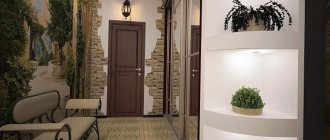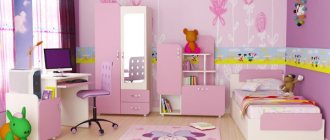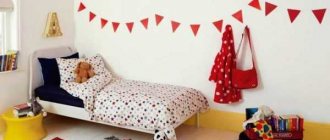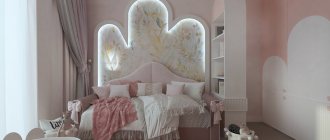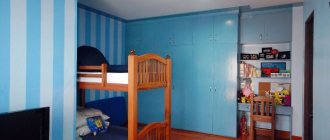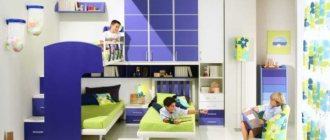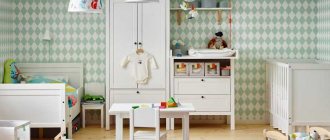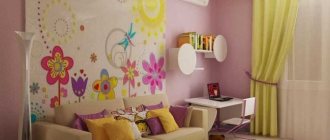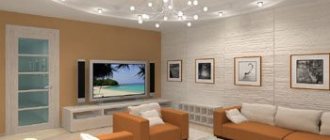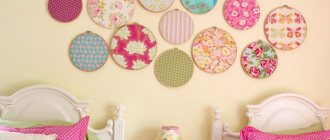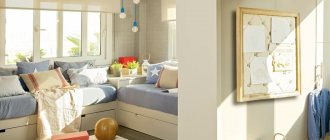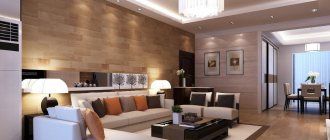The lighting requirements for children's rooms largely coincide with the rules applied in other living rooms. However, there are nuances in lighting a child’s room that must be taken into account in order to distribute the light taking into account the age of the child. Let's figure out what lighting fixtures should be in the room, how many of them are needed and how to arrange them correctly.
Baby's bedroom Source tollbrothers.com
Basic rules and requirements
It is in the children's room that the child spends most of his time at home; here he plays, draws, makes all kinds of crafts, learns homework, explores the world and relaxes. Therefore, lighting in a nursery should not only provide a number of solutions for each individual task, but also satisfy the requirements of comfort and safety.
Among the main points that you should definitely pay attention to are:
- In a child's room, lighting fixtures should have a uniform, diffused flow that would not tire the child or lead to blinding when entering the visibility zone.
- The shape and external parameters of lighting devices for a nursery should fit into the interior design of the room.
- When planning lighting, it is better to select moderate dimensions of the lamps, without lagging parts or hanging decorations, so that they do not get caught during the game. Also, for safety reasons, you should not use glass products with heavy and massive elements, which can cause injury if they fall.
- The glow temperature is selected from warm tones; it is better not to use lamps with a cold range. Neutral ones are only suitable for certain types of lighting.
- The total flux from the devices must provide sufficient brightness. Therefore, according to the requirements of SanPiN 2.2.1/2.1.1.1278-03 and SP 52.13330.2011, the illumination in children’s rooms should be at least 200 Lux, and in places of reading and writing 300 - 500 Lux.
- The color rendering coefficient of lamps used in children's lamps is selected in the range from 80 to 100, and the optimal color palette of surrounding objects will be achieved. On the packaging this parameter is indicated by the marking Ra.
- To evenly distribute lighting devices along the ceiling perimeter in a nursery, it is good to use spotlights.
Evenly distribute spotlights across the ceiling
. LED strip is better suited for illumination due to poor color rendition.
Regarding the type of lighting devices, avoid fluorescent light bulbs; they contain mercury, which is poisonous if the bulb is depressurized. Incandescent lamps get very hot, so they need to be well protected from possible contact. In addition, when burned, their flask may shatter into small fragments and injure the child. LED light bulbs are considered the best option for children today; they provide optimal illumination and are completely safe even in the event of a fall.
Features of selection
Just two simple rules simplify the complex process of selecting lamps for the bathroom. Here they are:
- Bathrooms need brighter light than other rooms;
- The lamps themselves cannot be placed in close proximity to a shower stall or bathtub; this is explained by basic safety standards.
The second point is designed to prevent moisture from entering the lighting unit. This is why ceiling lighting is the best option. If you need, for example, additional lighting for a mirror, then the best choice would be closed-type wall lamps.
When installing lighting elements, it is important to take into account the high level of air humidity in the room
When choosing a lamp, take into account the level of moisture resistance, which is indicated as a marking on the packaging of the lamps (you can ignore this if we are talking about a well-known brand with proven product quality). The value of this level must be selected at least 4. The number of lamps is determined by the area and height of the room
If there is daylight natural light and the bathroom has a small area, fewer lamps are required
The number of lamps is determined by the area and height of the room. If there is daylight natural light and the bathroom has a small area, fewer lamps are required.
Electrical safety issues
Since the issue of lighting in a nursery concerns the child’s unconscious behavior in relation to electricity, one of the most important tasks for parents is creating a safe interior. When in contact with floor lamps and lamps, childish behavior can lead to rapid wear of the insulation, causing the network potential to immediately appear on the body of the device. Therefore, the entire power supply network, together with lighting devices, should be protected using grounding and RCD, which will prevent the danger of electric shock.
All switches, in accordance with the requirements of clause 7.1.51 of the PUE, are preferably located on the side of the door handle with an installation height of up to 1 m. However, note that for children's institutions this parameter is increased to 1.8 m. Therefore, in order to protect the child from electric shock in the event of a light switch failure , the height should be from 1 to 1.5 m. Although for complete electrical safety, you can arrange a ceiling switch with a rope handle.
It is better to power all lights located in close proximity to the floor, in the area of the floor, window sill and other accessible interior design details from a reduced voltage of 12V.
General light
General lighting sets the background in the children's room, with its help you need to achieve a comfortable pastime. It is implemented through a central chandelier or spotlights. The first option is suitable for children's rooms with a small square footage, where it will be possible to achieve uniform lighting from one point. The second method is perfect for a children's room of medium and large area or elongated around the perimeter. In which the lighting from one ceiling lamp will not reach all corners, and the use of too powerful lamps will make being near the central lighting device unpleasant.
General lighting
In children's rooms with low ceilings, it is quite difficult to illuminate the entire room with one lamp. Therefore, for uniform lighting design, a combination of a central lamp and several spotlights around the perimeter is often used.
Serial connection
It is quite easy to implement such a scheme for installing ceiling lamps with your own hands, since it does not require a large number of wires. However, no more than six lamps can be connected in series, and the lighting will not be as effective. In addition, with a serial connection, a malfunction of one light source breaks the circuit, therefore, the operation of all lamps stops. To restore the functionality of the circuit, it is necessary to check each light bulb.
The connection diagram is as follows: the phase sequentially bypasses all lighting devices, and zero is applied to the output of the last lamp.
When deciding how to connect LED lights on the ceiling, you should exercise special care and attention
It is very important that the phase goes exactly to the switch and then to the lamps. Zero should go to the last element of the electrical circuit. This scheme will make the operation of the lamps safe and reliable.
This scheme will make the operation of the lamps safe and reliable.
A similar circuit for connecting spotlights is used very rarely, since the phase constantly breaks on the lamps. At the same time, the neutral wire remains intact all the way from the junction box to the output of the last lighting device in the chain.
Natural light
In any interior, additional lighting is created by natural light coming from window openings. Its presence is a definite plus, since under the influence of sunlight the child’s body produces vitamin D, which is so necessary for bone growth, so daylight cannot be completely excluded.
Natural lighting in the nursery
Natural light can be used during daylight hours for games, entertainment, desk work, studying, etc. But excessive intensity of street light will lead to eye fatigue.
Therefore, when arranging the interior of a nursery, it is important to take into account the following features of daylight lighting:
- The window faces north - in this case, natural light will be the least, so it makes no sense to limit the rays with thick curtains or roller blinds. Moreover, daylight can be enhanced due to the reflection effect from furniture or from the white surface of the walls, bright ceiling covering, etc.
- The south and east sides provide maximum light energy through the window, so in this case, thick curtains, Roman blinds or blinds must be used. In such rooms it is easier for a child to wake up in the morning from the sun's rays.
- The western side is similar to the northern one, since minimal light enters the window all day. But at sunset the sun turns directly into the window, which will be a great help for a schoolchild who has sat down to study.
However, the above recommendations for organizing competent lighting from a natural source are relative. Much depends on the dimensions of the window opening, so the actual needs for curtains can only be determined on an individual basis.
Local and decorative lighting
These types of lighting are applied to a specific location in the nursery. Local lighting is installed for a certain area, for example, at a desk or directly next to a closet with clothes. Local appliances are also placed near shelves or chests of drawers.
Decorative lighting, unlike local lighting, allows you to introduce changes to the color design, emphasize certain elements of the children's room, and with proper artificial placement it helps to create a real fairy tale for a child.
Decorative lighting in the nursery
Decorative lighting is implemented using:
- LED strips, recently RGB models have become especially popular;
- Flexible neon;
- Decorative lamps.
They can be used to mark the outline of floors, ceilings, doors, individual designs or protruding parts. LED lighting is also used to decorate window sills, beds, cabinets and other furniture. But the scope of application of LED decorative lighting is not limited to this list; you can independently invent new ideas for decorating a nursery.
Why are they needed?
Experienced designers and caring parents use suspended ceilings as the optimal means of transforming a room for children's games and relaxation. These popular ceiling structures are valued for their endless variety of options, originality of design and bright effect, reliability and practicality, ease of installation and ease of maintenance.
Stretch ceilings are beautiful, aesthetically pleasing, durable (manufacturers provide guarantees for a period of 15 to 50 years), absorb noise well, do not require special repairs and can fit into the most exotic interior design solution. Advanced developments in the manufacture of suspended ceilings for children's rooms make it possible to give them high strength, flexibility and any texture, and also make it possible to paint them in various colors and apply various images to the surface.
Lighting in a boy's room
Lighting for a boy's room
For a boy, the correct color scheme in lighting will be natural tones. When choosing backlights, it is better to give preference to blue and red shades. In the design of lighting fixtures, it is also worth focusing on cars, airplanes, rockets and other figures in the form of equipment. These principles should fully cover the ceiling chandelier and other lamps, for example, sets in the shape of soccer balls, etc. have proven themselves well.
Lighting in a girl's room
Proper artificial lighting for a girl is also done in a classic way with respect to the main light. A warm spectrum of radiation is appropriate here; the number of lamps should be sufficient to provide a soft atmosphere and complement the walls. It is inappropriate to use bright artificial light for girls, as it can obscure most interior details made in soft colors.
Lighting for a girl's room
Additional lighting in the interior of a nursery for a girl combines pink, yellow, green and other bright colors well. Decorative elements around which the lighting is performed work well in a fairy-tale or floral theme.
Stretch ceilings - photos
Especially for you, we have prepared a selection with different ideas and methods for installing suspended ceilings. Just look how harmoniously they fit into real “living” interiors!
Nuances of lighting depending on the age of the child
When planning the design of a nursery, it is important to take into account the age of the child; for this, experts recommend providing the following factors:
- For small children, all lighting devices, regardless of their purpose, should be kept out of reach.
- As you grow older, the intensity of light in certain areas will have to be increased, as visual tension will increase.
- For schoolchildren, you will have to arrange a study table or reading area in the nursery, for which table or wall lamps are installed.
- As the decorations grow older, and, accordingly, their lighting will lose their relevance, so they can be dismantled in the future. Garlands and colorful lights should be made removable.
- If you have several children of different ages, then each needs its own lamp and work area.
Universal Profile Apply
Based on it, you can assemble four types of products:
floating ceiling
light lines
floating lamp
curtain rods
It fits easily with all other profiles. In this case, the screws in it are screwed into the technological cavity and do not end up in the visible light zone.
But most importantly, if your light line runs along the perimeter of the ceiling, you can easily adjust and set the width you need.
When assembling a floating line in the center of the room, two such universal profiles are combined into one with self-tapping screws.
And even here it is possible to adjust the width of the luminous line.
To create a floating backlight from 10cm and wider, you will already need a plastic insert.
With such a universal thing you can assemble quite complex figures.
Arranging lighting in the play area and around the bed
In the play area, the child has to look for and collect various toys, the size of which ranges from those comparable to the baby himself to those that will fit on his palm. Therefore, in game locations it is advisable to have separate lighting, which will necessarily differ from the main one in location and intensity.
The correct lighting composition will help you choose the approximate size of the zone; it can be illuminated by several spots, an extended lamp or lamps built into the baseboard. The main requirement is a close location to the place of play and maximum coverage, so lighting devices must be positioned so that the child does not obscure the entire light flux during play.
A bedside lamp helps you calm down before going to bed, so large lampshades or shades are used here, soft diffused light that will not interfere with falling asleep. If your child reads before bed, it would be appropriate to install an adjustable model.
Lighting near the bed
Where to place the switches
A children's room cannot do without switches that the child can use independently when he grows up.
For convenience, you need to install a durable switch near the door. Sockets and switches should be installed in the playing area and near the desk. After all, the child will need to connect a lamp, laptop, or e-reader.
To turn on household appliances, a socket on a free wall would not hurt, because school-age children can vacuum cleaner, use a hairdryer, and charge their phone on their own.
Based on the photo, you can choose a light fixture that you like and is suitable for the children's bedroom. Properly organized lighting is the key to a child’s good health and vision.
Types of lamps used
For lighting in the nursery, you can use a wide variety of lamps; all categories can be divided into ceiling artificial lighting devices, wall sconces and spots, floor and table lamps.
Ceiling models can be divided into the following types:
- hanging - mounted on a hook, which is hidden behind a decorative cap, suitable for children's rooms with a high ceiling, since they themselves have an impressive length;
- on a dowel – installed flush with the surface, suitable for children’s rooms with low and medium ceiling heights;
- on a bracket - suitable for installation under suspended ceilings, can be positioned either flush with the surface or protruding slightly.
If we consider spotlights, they are also divided into recessed and overhead. In the first case, the lamp with the entire device is hidden in a niche in a suspended or suspended ceiling, and in the second, the lighting lamp is located under the ceiling surface.
Photo printing
Special technologies for applying almost any image onto an artificial or woven fabric today make it possible to turn it into a masterpiece of modern art or a skillful copy of the creations of the great masters of the past.
That’s why photo printing on a stretch ceiling is one of the most common ways to decorate children’s rooms. Kids and teenagers especially like the realism of the resulting image - their favorite characters, scenes or landscapes embodied on a stretch ceiling look like real ones. To achieve this result, all you need is an original high-resolution image and conscientious manufacturers and installers of stretch ceilings with photo printing.
In their reviews, customers often note that the stretch ceiling fabric with photo printing is very dense, and it is much more difficult to damage it than a thin film. And many people complain that it was in vain that they hesitated for a long time to order glossy photo printing. This bold solution for a stretch ceiling looks no worse than the usual matte one. Although photo printing still looks more advantageous on a satin stretch ceiling.
